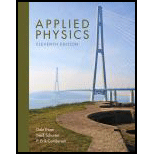
Applied Physics (11th Edition)
11th Edition
ISBN: 9780134159386
Author: Dale Ewen, Neill Schurter, Erik Gundersen
Publisher: PEARSON
expand_more
expand_more
format_list_bulleted
Concept explainers
Textbook Question
Chapter 3.3, Problem 16P
Find the x- and y- components of each resultant vector R and graph the resultant vector R

Expert Solution & Answer
Want to see the full answer?
Check out a sample textbook solution
Students have asked these similar questions
Use the analytical method (algebra) AND graphical
method to find the value of the resultant vector
Find the resultant of A and B using a graph. Write the resultant in a magnitude form.
Please use graph paper if possible, not mandatory
Use the following individual vectors to GRAPHICALLY find the resultant vector in the first three problems. Remember, the resultant vector must have both magnitude and direction. Draw and include a scale.
Chapter 3 Solutions
Applied Physics (11th Edition)
Ch. 3.1 - Using the scale 1.0 cm = 50km, find the length of...Ch. 3.1 - Using the scale 1.0 cm = 50km, find the length of...Ch. 3.1 - Using the scale 1.0 cm = 50km, find the length of...Ch. 3.1 - Using the scale 1.0 cm = 50km, find the length of...Ch. 3.1 - Using the scale 1.0 cm = 50km, find the length of...Ch. 3.1 - Using the scale 1.0 cm = 50km, find the length of...Ch. 3.1 - Draw the vectors in Problems 1 through 6 using the...Ch. 3.1 - Draw the vectors in Problems 1 through 6 using the...Ch. 3.1 - Draw the vectors in Problems 1 through 6 using the...Ch. 3.1 - Draw the vectors in Problems 1 through 6 using the...
Ch. 3.1 - Draw the vectors in Problems 1 through 6 using the...Ch. 3.1 - Draw the vectors in Problems 1 through 6 using the...Ch. 3.1 - Using the scale 14 in. = 20 mi, find the length of...Ch. 3.1 - Using the scale 14 in. = 20 mi, find the length of...Ch. 3.1 - Using the scale 14 in. = 20 mi, find the length of...Ch. 3.1 - Using the scale 14 in. = 20 mi, find the length of...Ch. 3.1 - Using the scale 14 in. = 20 mi, find the length of...Ch. 3.1 - Using the scale 14 in. = 20 mi, find the length of...Ch. 3.1 - Draw the vectors in Problems 13 through 18 using...Ch. 3.1 - Draw the vectors in Problems 13 through 18 using...Ch. 3.1 - Draw the vectors in Problems 13 through 18 using...Ch. 3.1 - Draw the vectors in Problems 13 through 18 using...Ch. 3.1 - Draw the vectors in Problems 13 through 18 using...Ch. 3.1 - Draw the vectors in Problems 13 through 18 using...Ch. 3.2 - Find the x- and y-components of each vector in the...Ch. 3.2 - Find the x- and y-components of each vector in the...Ch. 3.2 - Find the x- and y-components of each vector in the...Ch. 3.2 - Find the x- and y-components of each vector in the...Ch. 3.2 - Find the x- and y-components of each vector in the...Ch. 3.2 - Find the x- and y-components of each vector in the...Ch. 3.2 - Find the x- and y-components of each vector in the...Ch. 3.2 - Find the x- and y-components of each vector in the...Ch. 3.2 - Find the x- and y-components of each vector in the...Ch. 3.2 - Find the x- and y-components of each vector in the...Ch. 3.2 - Make a sketch of each vector in standard position....Ch. 3.2 - Make a sketch of each vector in standard position....Ch. 3.2 - Make a sketch of each vector in standard position....Ch. 3.2 - Make a sketch of each vector in standard position....Ch. 3.2 - Make a sketch of each vector in standard position....Ch. 3.2 - Make a sketch of each vector in standard position....Ch. 3.2 - Make a sketch of each vector in standard position....Ch. 3.2 - Make a sketch of each vector in standard position....Ch. 3.2 - Find the x- and y- components of each vector. 19.Ch. 3.2 - Find the x- and y- components of each vector. 20.Ch. 3.2 - Find the x- and y- components of each vector. 21.Ch. 3.2 - Find the x- and y- components of each vector. 22.Ch. 3.2 - Find the x- and y- components of each vector. 23.Ch. 3.2 - Find the x- and y- components of each vector. 24.Ch. 3.2 - Find the x- and y-components of each vector given...Ch. 3.2 - Find the x- and y-components of each vector given...Ch. 3.2 - Find the x- and y-components of each vector given...Ch. 3.2 - Find the x- and y-components of each vector given...Ch. 3.2 - Find the x- and y-components of each vector given...Ch. 3.2 - Find the x- and y-components of each vector given...Ch. 3.3 - Use graph paper to find the resultant of each...Ch. 3.3 - Use graph paper to find the resultant of each...Ch. 3.3 - Use graph paper to find the resultant of each...Ch. 3.3 - Use graph paper to find the resultant of each...Ch. 3.3 - Use graph paper to find the resultant of each...Ch. 3.3 - Use graph paper to find the resultant of each...Ch. 3.3 - Use graph paper to find the resultant of each...Ch. 3.3 - Use graph paper to find the resultant of each...Ch. 3.3 - Use graph paper to find the resultant of each...Ch. 3.3 - Use graph paper to find the resultant or each...Ch. 3.3 - Use graph paper to find the resultant or each...Ch. 3.3 - Use graph paper to find the resultant of each...Ch. 3.3 - Use graph paper to find the resultant of each...Ch. 3.3 - Use graph paper to find the resultant of each...Ch. 3.3 - Find the x- and y- components of each resultant...Ch. 3.3 - Find the x- and y- components of each resultant...Ch. 3.3 - Find the x- and y- components of each resultant...Ch. 3.3 - Find the x- and y- components of each resultant...Ch. 3.3 - Find the x- and y- components of each resultant...Ch. 3.3 - Find the x- and y- components of each resultant...Ch. 3.3 - Find the x- and y- components of each resultant...Ch. 3.3 - Find the x- and y- components of each resultant...Ch. 3.3 - Find the x- and y- components of each resultant...Ch. 3.3 - Find the x- and y- components of each resultant...Ch. 3.3 - For each set of vectors, graph and find the x- and...Ch. 3.3 - For each set of vectors, graph and find the x- and...Ch. 3.3 - For each set of vectors, graph and find the x- and...Ch. 3.3 - For each set of vectors, graph and find the x- and...Ch. 3.3 - For each set of vectors, graph and find the x- and...Ch. 3.3 - For each set of vectors, graph and find the x- and...Ch. 3.3 - In Problems 31 through 42, find each resultant...Ch. 3.3 - In Problems 31 through 42, find each resultant...Ch. 3.3 - In Problems 31 through 42, find each resultant...Ch. 3.3 - In Problems 31 through 42, find each resultant...Ch. 3.3 - In Problems 31 through 42, find each resultant...Ch. 3.3 - In Problems 31 through 42, rind each resultant...Ch. 3.3 - In Problems 31 through 42, find each resultant...Ch. 3.3 - In Problems 31 through 42, find each resultant...Ch. 3.3 - In Problems 31 through 42, find each resultant...Ch. 3.3 - In Problems 31 through 42, find each resultant...Ch. 3.3 - In Problems 31 through 42, find each resultant...Ch. 3.3 - In Problems 31 through 42, find each resultant...Ch. 3.3 - A road grader must go around a pond by traveling...Ch. 3.3 - An earthmover must go north 350 m and then west...Ch. 3.3 - An airplane takes off and flies 225 km on a course...Ch. 3.3 - A ship travels 50.0 mi on a course of 15.0 south...Ch. 3.3 - A ship travels 135 km from port on a course of...Ch. 3.3 - A ship travels 145 km from port on a course of...Ch. 3 - Displacement a. can be interchanged with...Ch. 3 - When adding vectors, the order in which they are...Ch. 3 - A vector is in standard position when its initial...Ch. 3 - Discuss number plane, origin, and axis in your own...Ch. 3 - Can every vector be described in terms of its...Ch. 3 - Describe how to add two or more vectors...Ch. 3 - Describe how to find a resultant vector if given...Ch. 3 - Is a vector limited to a single position in the...Ch. 3 - Is the angle of a vector in standard position...Ch. 3 - What are the limits on the angle measure of a...Ch. 3 - Describe how to find the x- and y-components of a...Ch. 3 - Describe how to find a vector in standard position...Ch. 3 - Find the x- and y-components of vector R, which...Ch. 3 - Find the x- and y-components of vector R, which...Ch. 3 - Find the x- and y-components of vector R, which...Ch. 3 - Vector R has length 9.00 cm at 240.0. Find its x-...Ch. 3 - Vector R has length 9.00 cm at 40.0. Find its x-...Ch. 3 - Vector R has length 18.0 cm at 305.0. Find its x-...Ch. 3 - A hiker is plotting his course on a map with a...Ch. 3 - A hiker is plotting his course on a map with a...Ch. 3 - A co-pilot is charting her course on a map with a...Ch. 3 - A co-pilot is charting her course on a map with a...Ch. 3 - Vector R has x-component = +14.0 and y-component =...Ch. 3 - Vector R has x-component = -5.00 and y-component =...Ch. 3 - Vector R has x-component = +8.00 and y-component =...Ch. 3 - Vector R has x-component = -3.00 and y-component =...Ch. 3 - Vectors A, B, and C are given. Vector A has...Ch. 3 - Vectors A, B, and C are given. Vector A has...Ch. 3 - Vectors A, B. and C are given. Vector A has...Ch. 3 - Vectors A, B, and C are given. Vector A has...Ch. 3 - Graph and find x- and y-components of each...Ch. 3 - Graph and find the x- and y-components of each...Ch. 3 - An airplane takes off and flies 245 km on a course...Ch. 3 - A ship travels 155 km from port on a course of...Ch. 3 - The New Clark Bridge is an elegant cable-stayed...Ch. 3 - Frank just learned that the 800-m section of...Ch. 3 - Power cables need to be suspended by the power...Ch. 3 - With the airplane cruising at 30,000 ft, the...
Additional Science Textbook Solutions
Find more solutions based on key concepts
3. What is free-fall, and why does it make you weightless? Briefly describe why astronauts are weightless in th...
The Cosmic Perspective
Express the unit vectors in terms of (that is, derive Eq. 1.64). Check your answers several ways Also work o...
Introduction to Electrodynamics
21. How does the downward pressure of the 76-cm column of mercury in a barometer compare with the air pressure ...
Conceptual Physical Science (6th Edition)
A ball starts from rest and rolls without slipping down a slope, then starts up a frictionless slope (Fig. 10.2...
Essential University Physics: Volume 1 (3rd Edition)
The pV-diagram of the Carnot cycle.
Sears And Zemansky's University Physics With Modern Physics
Explain all answers clearly, using complete sentence and proper essay structure if needed. An asterisk (*) desi...
Cosmic Perspective Fundamentals
Knowledge Booster
Learn more about
Need a deep-dive on the concept behind this application? Look no further. Learn more about this topic, physics and related others by exploring similar questions and additional content below.Similar questions
- Draw and label the vector 2A snd the vector 1/2Aarrow_forwardFor the given vectors:a.) Find the A - C using the triangle methodb.) Find the vector product B x Dc.) Find the vector product D x Aarrow_forward1. Use a scale drawing to find the magnitude of the vector sum A + B. 2. Find the direction of the vector sum A + B.arrow_forward
- For a vector, F⇀= 119.37 kN at an angle of 66.39 degrees made with the horizontal in Q1. Find the horizontal component rounding to 2 decimal places. Q represents Quadrant.arrow_forwardCalculate the resultant vector of the following using Pythagorean theorem and graphical method. 5 m north and 4 m eastarrow_forwardYou are out for an early jog. You walked and ran 5.0 m, south, 12.0 m east, 4.0 southwest, and 6.0 m west. Use the polygon method in solving the resultant vector and the direction. scale: 1m per width of the graphing paperarrow_forward
- Given the diagram below, which method is best used to find the resultant vector?arrow_forwardDraw each vector and evaluate the horizontal (x) and vertical (y) components. Show graph.arrow_forwardUsing the component & polygon method solve the problem below. Note: The resultant vector should be expressed using a magnitude and a direction. The boat travels 200 miles due west and then 150 miles 60 degrees north of west. Determine the resultant displacement.arrow_forward
- Based on the image below, find the magnitude and direction of Vector A cross Vector B.arrow_forwardWhat is the magnitude of the resultant vector's unit vector? (Resultant vector of the two vectors shown in the figure below) *arrow_forwardFor the vectors A and Bin the figure (Figure 1), use a scale drawing to find the magnitude of the vector sum A +B Find the direction of the vector sum A+B .arrow_forward
arrow_back_ios
SEE MORE QUESTIONS
arrow_forward_ios
Recommended textbooks for you
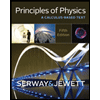 Principles of Physics: A Calculus-Based TextPhysicsISBN:9781133104261Author:Raymond A. Serway, John W. JewettPublisher:Cengage Learning
Principles of Physics: A Calculus-Based TextPhysicsISBN:9781133104261Author:Raymond A. Serway, John W. JewettPublisher:Cengage Learning Physics for Scientists and Engineers, Technology ...PhysicsISBN:9781305116399Author:Raymond A. Serway, John W. JewettPublisher:Cengage Learning
Physics for Scientists and Engineers, Technology ...PhysicsISBN:9781305116399Author:Raymond A. Serway, John W. JewettPublisher:Cengage Learning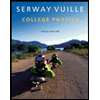 College PhysicsPhysicsISBN:9781285737027Author:Raymond A. Serway, Chris VuillePublisher:Cengage Learning
College PhysicsPhysicsISBN:9781285737027Author:Raymond A. Serway, Chris VuillePublisher:Cengage Learning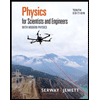 Physics for Scientists and Engineers with Modern ...PhysicsISBN:9781337553292Author:Raymond A. Serway, John W. JewettPublisher:Cengage Learning
Physics for Scientists and Engineers with Modern ...PhysicsISBN:9781337553292Author:Raymond A. Serway, John W. JewettPublisher:Cengage Learning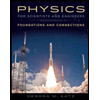 Physics for Scientists and Engineers: Foundations...PhysicsISBN:9781133939146Author:Katz, Debora M.Publisher:Cengage Learning
Physics for Scientists and Engineers: Foundations...PhysicsISBN:9781133939146Author:Katz, Debora M.Publisher:Cengage Learning

Principles of Physics: A Calculus-Based Text
Physics
ISBN:9781133104261
Author:Raymond A. Serway, John W. Jewett
Publisher:Cengage Learning

Physics for Scientists and Engineers, Technology ...
Physics
ISBN:9781305116399
Author:Raymond A. Serway, John W. Jewett
Publisher:Cengage Learning

College Physics
Physics
ISBN:9781285737027
Author:Raymond A. Serway, Chris Vuille
Publisher:Cengage Learning

Physics for Scientists and Engineers with Modern ...
Physics
ISBN:9781337553292
Author:Raymond A. Serway, John W. Jewett
Publisher:Cengage Learning

Physics for Scientists and Engineers: Foundations...
Physics
ISBN:9781133939146
Author:Katz, Debora M.
Publisher:Cengage Learning
Introduction to Vectors and Their Operations; Author: Professor Dave Explains;https://www.youtube.com/watch?v=KBSCMTYaH1s;License: Standard YouTube License, CC-BY